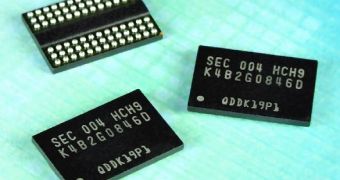It appears that many things happened because of the recent disaster in Japan, even in regards to the different segments of the IT industry, one of which seems to be progressing in a positive direction, ironically enough.
There are no words that can describe just how dismal the situation in Japan is at the moment, with the consequences of the earthquake and tsunami getting worse and worse.
Not only are 10,000 or more people expected to have died, but a nuclear power plant has been leaking radiation for days, after its reactors were plagued by explosions, though an actual meltdown has not occurred.
This all comes in addition to the many people stranded without food or water and the fire that sparked at an oil refinery.
Meanwhile, companies on the IT market, especially some manufacturers of semiconductors, saw their operations disrupted.
No long ago, DRAM makers said they were no longer willing to offer spot prices on their chips, but this situation seems to have changed.
As reported by Digitimes, both DRAM and NAND chips saw their prices practically skyrocket on March 14, yesterday as it were.
Branded and effectively tested 1 Gb DDR3 chips, for example, were quoted at US$1.11 and US$0.97, respectively. This implies rises of 7.2% and 7.6%, respectively.
Meanwhile, NAND MLC (multi-level cell) chips of 16 Gb and 32 Gb got 16.75% and 20.5% more expensive, respectively, in a single day. This put them at US$4.67 and US$6.06, while microSD cards got 26% more pricey themselves.
The factor behind this sudden change in pricing direction is owed to the fact that IT players are now concerned about the possibility of chip shortages, since the Japan earthquake may seriously affect the memory supply chain.
Rotating power cuts in Japan and the way the transportation infrastructure was thrown off loop will likely contribute to the difficulties.

 14 DAY TRIAL //
14 DAY TRIAL //